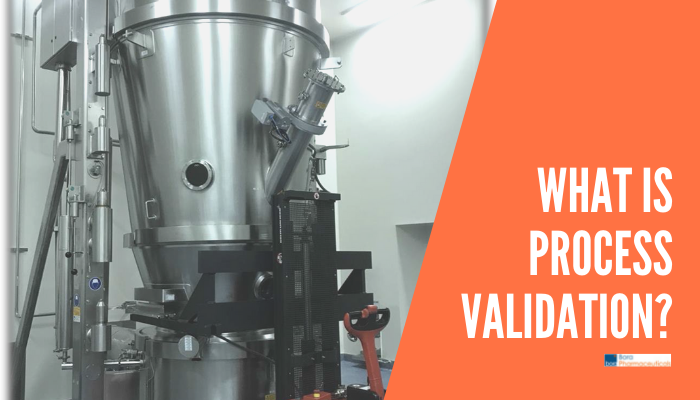The Process Validation (PV) Guidance from the FDA (January 2011) adopts the product lifecycle concept, emphasizing the expectation that process validation starts with process design and carries throughout the entire lifecycle of a commercial product. During the process qualification stage, the process design is evaluated to determine if the process is capable of consistently delivering quality products. The goal of Process Validation is to confirm the process design and demonstrate that the commercial manufacturing process performs as expected.
Process validation occurs in a series of activities taking place over the lifecycle of a product and its process. The product lifecycle is comprised of three stages including process design as:
- Stage I, process qualification
- Stage II, and continued process verification
- Stage III, in compliance with relevant regulations.
Stage I: Process Design
The goal of Process Design is to create a process suitable for routine commercial manufacturing that can consistently deliver a product that meets all its Critical Quality Attributes (CQA)s. Equipment capacity/capability verification, any special process requirements as well as cleaning validation requirements will also be evaluated at this stage.
Capturing Process Knowledge and Understanding
The knowledge of material attributes and processing is captured during the process design stage to determine the process capability and source of variation. Typical activities in this stage include conducting process development studies to establish set-point and control limits for critical process parameters (CPP) and critical material attributes (CMA) that are important to product performance. The processing knowledge is used to establish an approach to process control for each unit operation and the overall process. The information on studies conducted and its rationale are documented in summary reports as this knowledge and processing may be used during the process qualification and continued process verification stages when the process design is revised or the strategy for process control is changed.
Establishing a Strategy for Process Control
Process control strategies will be established by reducing sources of variation or adjusting for input variation, i.e., material analysis, equipment monitoring at significant manufacturing steps, and controls on process variables to mitigate the risks and assure the quality of the product; evaluation of sampling techniques and sampling plans. The outcome of this stage will be the design of a process suitable for routine manufacture that will consistently deliver a product that meets its critical quality attributes (CQAs). The identified operational limits and strategy for process controls (set-point and limit controls) will be defined in the process performance qualification (PPQ) batch record for confirmation at Stage II.
Stage II: Process Qualification
The Process Qualification stage is the demonstration stage of the validation lifecycle to confirm the process design and ensure that set points and limit controls established for all process parameters are valid. During Stage II, the process design is evaluated to demonstrate that the designed process is capable of reproducible commercial manufacturing. During this stage, CGMP-compliant procedures must be followed. Successful completion of this stage is necessary before commercial distribution. If the product meets all the manufacturing, packaging, and analytical testing requirements, then the product manufactured during this stage is saleable for commercial distribution.
Design of the Facility and Qualification of Utilities and Equipment (PQ)
The verification of the facility design, as well as the qualification of process equipment and GMP utilities that support processes, should be completed before commencing PPQ to demonstrate that the facility, utilities, and equipment for the corresponding product-specific processes are suitable for their intended use and perform properly.
Process Performance Qualification (PPQ)
During the PPQ stage, the facility, utilities, equipment, and the trained personnel with the commercial manufacturing process, control procedures, and components to produce commercial batches are involved. A successful PPQ should confirm the process design and demonstrate that the commercial manufacturing process is performed as per the designed process. The manufacturing processes for each drug product are qualified to demonstrate process control and ensure the manufacture of safe and effective drug products. A higher level of sampling, additional testing, and greater scrutiny of process performance are required during PPQ batches than during routine commercial production.
Stage III: Continued Process Verification
This stage provides continued assurance that the commercial processes remain validated during commercial production through quality procedures, continuous improvement initiatives, and process experience. Once the continued process verification is initiated, the qualification status of the facility, utilities, and equipment are maintained through routine monitoring, maintenance, and calibration using approved procedures and schedules to ensure that a process remains in control. Throughout the product lifecycle, the manufacturing process performance will be monitored to ensure that it is working as anticipated to deliver the desired product quality attributes. If any undesired process variability is detected, appropriate actions should be taken to correct the variability and prevent future problems so that the process remains in control. The additional knowledge gained during routine manufacturing will be for the adjustment of process parameters as part of the continual improvement of the drug product.
In closing
The lifecycle approach of Process Validation links product and process development to the commercial manufacturing process and maintains the process in a state of control during routine commercial production. Risk assessment is increasingly important from the start of development throughout scale-up, process validation, and/or continued process verification. With a lifecycle approach to process validation that employs risk-based decision making it is imperative that product knowledge, process understanding, and a suitable control strategy are the number one priority from start to finish.
